Carlo Gesualdo, the Murderous Composer
Carlo Gesualda was born in Venosa, part of the Kingdom of Naples in southern Italy in 1566. His father was the Prince of Venosa, having been granted that title in 1561 when he married Geronima Borromeo, niece of Pope Pius IV. Carlo was his second son, and so the plan was for him to go into the priesthood while his elder brother Luigi would inherit the principality. His mother’s family had a strong connection to the church – in addition to her Papal uncle, two of her brothers were senior figures in the priesthood. Carlo Borromeo, for whom our Carlo was named, was a leading light in the Counter-Reformation. [1] This movement to rein in the church’s excesses following the Protestant Reformation had diminished the temporal presence of the church, but it was still a strong force in all the Italian kingdoms. After Carlo’s mother died when he was seven, he was placed into the care of his other ecclesiastical uncle, a cardinal named named Alfonso. This plan to have him follow these uncles into the church was abruptly derailed in 1584 however, when Luigi died.
Already Carlo’s lifelong obsession with music was beginning to show, and his first piece was published in 1585 shortly after he became his father’s heir. He was also friends with a composer named Pomponio Nenna, who moved in his court circles. Some think that Carlo may have studied music from Pomponio, and the two would retain a close working correspondence for the rest of their lives. But music was not the only thing occupying Carlo’s mind. In addition to his brother’s position, Carlo also inherited his arranged marriage with his cousin, Donna Maria d’Avalos.
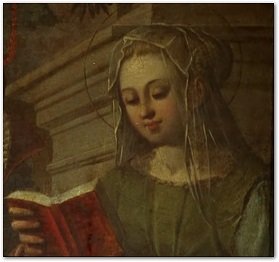
Maria was the grand-daughter of Francesco Ferdinando d’Ávalos, a former Commander in Chief of the Spanish Army, governor of Milan and Viceroy of Sicily. She was four years older than Carlo. Though the pair had a son, Carlo seems to have neglected her in favour of his musical pursuits. In response, Maria began an affair with another of her cousins, Fabrizio Carafa. He was reportedly one of the most handsome men in Naples, and had purchased the Dukedom of Andria from the Neapolitan government for the princely sum of a hundred thousand ducats. He was also married, though that seems to have concerned him as little as Carlo. Perhaps he discounted the slender non-entity, with his strange musical obsession. If so, that would prove to be a fatal miscalculation.
Exactly when Carlo found out about the affair is unknown. Once he did, however, his choice under the unspoken code of honour among Spanish nobles [2] of the time was clear. Either accept the stain on his honour, or wash it out with blood. He chose the latter. On the 16th October 1590, he set out from the apartments he rented in the city of Naples on a hunting trip, telling Maria that it would be two days before he returned. Naturally, she leapt at the chance for her lover to visit. As the two lay in bed together that night, Carlo and three men burst into the room and brutally murdered the pair of them. Witnesses reported that he cried:
Kill that scoundrel along with this harlot! Shall a Gesualdo be made a cuckold?
Indeed, after Carlo left the room, his hands dripping with blood, he turned and re-entered in order to stab his wife again to make sure she was dead.
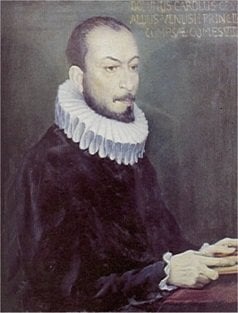
Given the family connections of both Maria and Fabrizio, Carlo wisely fled the city for his family’s country fortress of Gesualdo. The following day a delegation of nobles examined the scene of the crime. On the floor lay Fabrizio, who was wearing a nightdress and had been stabbed multiple times as well as being shot in both the arm and the head. Maria was on the bed, also in her nightclothes. Her throat had been cut, and she had also been stabbed multiple times. Though the violence of Carlo’s conduct was extreme, the nobles did conclude that the pair had clearly been cuckolding him and so, in their eyes, no crime had been committed. [3]
The tribunal cleared his name, but Carlo was hardly able to return to the capital just yet. Not least because the Palazzo Sansevero, where he had been staying, was the property of the Prince of Sansevero – Fabrizio’s stepfather. In Carlo’s absence, the rumour mill went into overdrive. Stories of him having mutilated the corpses in a fashion to fit their crime were soon followed by a tale of him having dragged them out onto the steps of the Palazzo for public display. One lurid extension of that had it that a local insane monk had violated Maria’s corpse as it lay there. Another tale had it that Carlo had also killed Maria’s infant child (Emanuele, who was actually alive and well), believing it a result of her adultery. Regardless of the truth of any of these rumours, they ensured that Carlo’s reputation would always have an edge of the macabre.
Of course, Carlo himself would more than live up to that reputation in the years to come. His four years of exile in Gesualdo seem to have marked a turning point in both his personal and his musical outlook. This exile ended in 1794, when he married Eleonora d’Este, niece of the Duke of Ferrara, Alfonso d’Este. The house of Este had a problem – Alfonso was the last legitimate heir to the Duchy, and he was completely infertile. With him now in his sixties, their hopes of keeping the Duchy within their family was to pass it to a “cadet branch” of the family, descended from a younger son. This was not technically permitted under Italian law, but with strong enough allies they could make it stick. They already had the Holy Roman Emperor on side, but to make it stick they would also need the backing of the Pope. With Carlo’s family ties to the church hierarchy, they hoped to gain that backing.
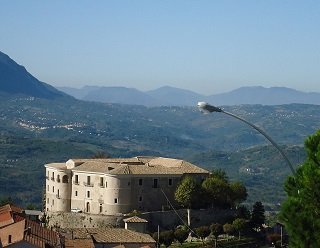
For Carlo the marriage meant something else – a chance to return to artistic society. His father had died in 1591, leaving him both a Prince and one of the richest men in the Kingdom of Naples, but he still feared the shadow of the vendetta. With the backing of Alfonso he felt able to leave his castle and visit Ferrara. There he was able to collaborate with the musicians of the Duke’s court, and his first book of madrigals was published. His music was strange, even for the period. At the time the rules of what we nowadays call “classical music” were still being codified, and Carlo’s innovative use of dissonance would not wind up as part of the canon. His choice of subject matter has been taken as indicative of the scars left on his psyche by the murders he had committed – love and death feature heavily.
Sadly the marriage to Carlo was not enough to bring the Pope’s support to the house of Este, and when Alfonso died in 1597 the Pope, backed by an army, asserted his right to claim the heirless domain. With the loss of his ally, Carlo once again retreated back to Gesualdo, but inspired by Ferrara he established his own circle of professional musicians in court. Few other composers were welcome however, though he did still maintain a correspondence and influence with the rest of the Neapolitan scene. (His old teacher Pomponia Nenna, who had ironically inherited a great deal of money from Fabrizio’s estate after Carlo had killed him, was one of those who explicitly took Carlo’s new style on board.)
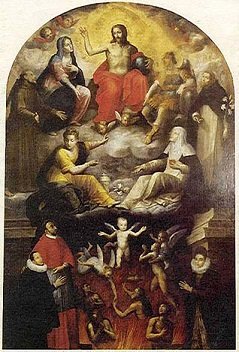
Eleonora does not seem to have enjoyed Gesualdo, and spent much of her time in Ferrara away from her husband’s court. The two did have two children, though neither survived infancy. Eleonora does seem to have been smart enough not to meet Maria’s fate, and if she did have any affairs she kept them discreet. Not so her husband – he kept two concubines, Aurelia and Polisandra, and his sexual practices with them became so extreme that eventually Eleonora had the two women charged with witchcraft in 1603. That might seem somewhat of an over-reaction, until you find out what those practises were. At the trial it was asserted that Carlo drank Aurelia’s menstrual blood, and ate bread which Polisandra had held “within her nature” after the two had copulated. Of course, these were based on confessions obtained under torture, and so must be taken in that light. Though the women were found guilty, Carlo intervened to protect them and they were instead imprisoned – within Castle Gesualdo, and under Carlo’s protection.
None of this detracted from Carlo’s musical work. The same year of the trial he published a set of “sacred works” (hymns, essentially). As time went on, his conduct grew even more extreme. He became a flagellant, or possibly just a masochist, and hired servants to beat him throughout the day. He hired poets to write poems on the subject of love and death, and set them to music for his last two books of madrigals, which were published in 1611. The same year he also published Tenebrae Responsoria, the “Responses of the Shadows”. The name is less sinister than it might seem – the Tenebrae were a Catholic practice, which died out in the 20th century, of marking the mornings of Maundy Thursday, Good Friday and Easter Saturday by extinguishing candles and singing liturgical lamentations. The works of 1611 are considered to be the peak of Carlo’s style, and the most unique of his compositions.
In 1613 Emanuele, Carlo’s son and the only one of his children to survive to adulthood, died. Within weeks Carlo was also dead. The circumstances of the deaths were unclear – some point to the old vendetta finally brought to fruition, others think that Eleonora might finally have tired of her eccentric husband. The truth may be that in the pre-antibiotic age, people needed no reason to suddenly die. While the echoes of his influence lingered on in Naples (Pompona, for example, wrote several works inspired by Carlo’s style) he was unfortunate enough to have been writing for a dying form. As the Renaissance period of music gave way to the Baroque, composers such as Claudio Monteverdi were transforming the way music was performed, creating the concerto. Carlo Gesualdo was left behind, remembered more for his murders than his music.
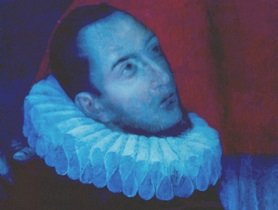
It was not until the 20th century that Carlo was rediscovered. The British composer Philip Heseltine, better known under the name Peter Warlock, wrote a biography of Carlo with his collaborator and friend Cecil Gray. Carlo Gesualdo, Prince of Venosa, Musician and Murderer is not a scholarly work, but it introduced Carlo to a whole new generation of composers. His unique style was to their trained ears, almost a shocking violation of the form, and one that matched well with his murders and controversial lifestyle. Composers such as Igor Stravinsky, Peter Maxwell Davies and Wolfgang Rihm referenced his work. Stage shows and films about his life continue to this day. Perhaps most notably the author Aldous Huxley wrote of his experience listening to Carlo’s madrigals during the mescaline trip he documented in The Doors of Perception:
‘And yet,’ I felt myself constrained to say, as I listened to these strange products of a Counter-Reformation psychosis working upon a late medieval art form, ‘and yet it does not matter that he’s all in bits. The whole is disorganized. But each individual fragment is in order, is a representative of a Higher Order. The Highest Order prevails even in the disintegration. The totality is present even in the broken pieces. More clearly present, perhaps, than in a completely coherent work. At least you aren’t lulled into a sense of false security by some merely human, merely fabricated order. You have to rely on your immediate perception of the ultimate order. So in a certain sense disintegration may have its advantages. But of course it’s dangerous, horribly dangerous. Suppose you couldn’t get back, out of the chaos…’
And perhaps, he never did.
Images via wikimedia except where stated.
[1] He was also enormously popular for his anti-corruption stance and was made a saint very shortly after his death.
[2] At the time Naples was ruled by the Aragonese, so despite being in Italy its nobles considered themselves Spanish.
[3] Italian nobles would also have expected Carlo to kill his wife, but killing her lover they would probably have regarded as a step too far.
